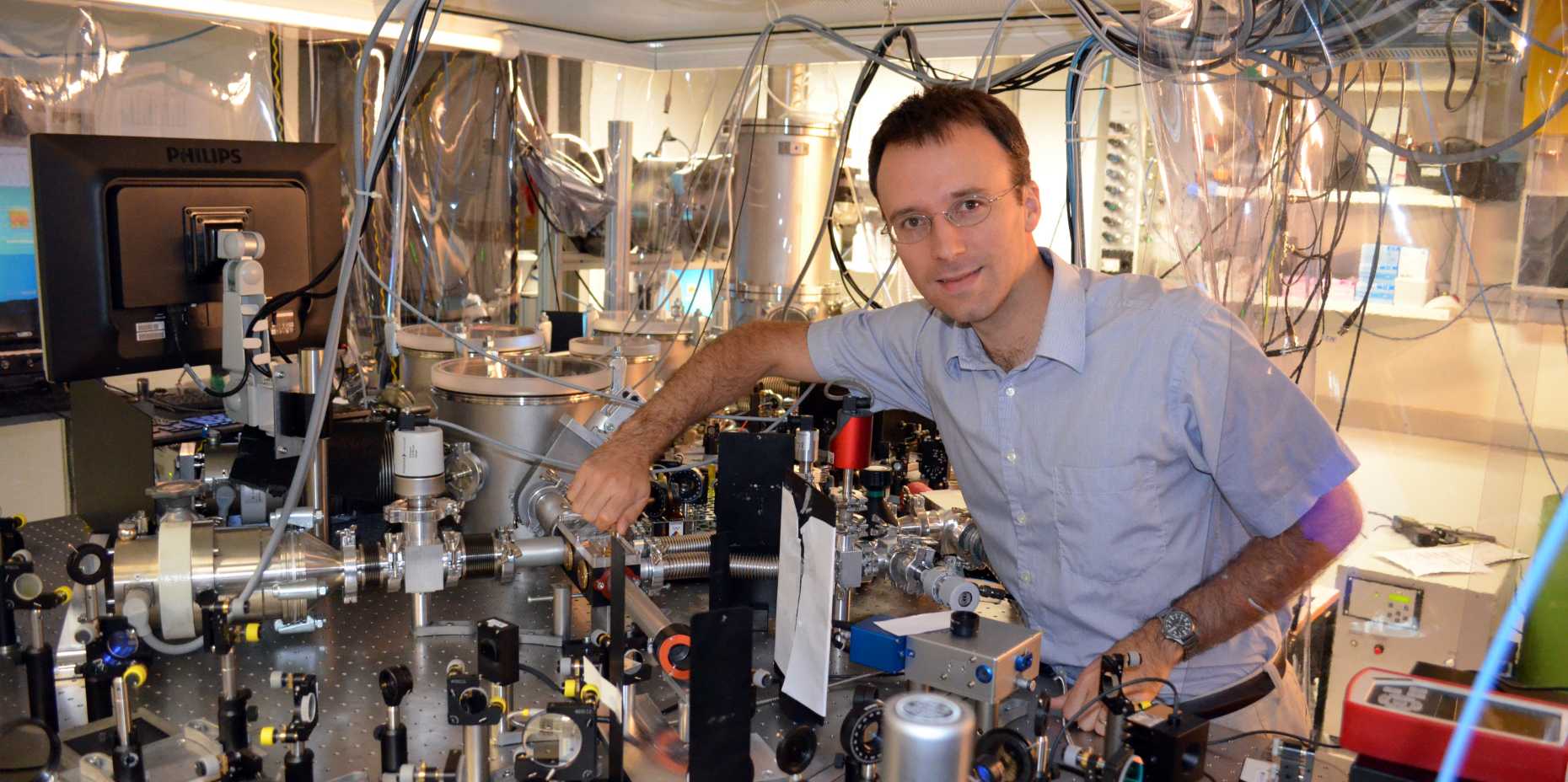Award-winning electron observer
Hans Jakob Wörner is the recipient of the Klung Wilhelmy Science Award for his research on super-fast electron movements during chemical processes.
Chemical reactions are omnipresent – they occur in every cell of every organism, the atmosphere, soil, water, and so on. As a structural formula or in chemical shorthand, reactions can be explained as follows: substance A reacts with substance B to form product C. What we are actually dealing with here is a fast-paced dance between particles: electrons defect from one atom to another, break chemical bonds and form new ones all within a matter of femtoseconds, i.e. quadrillionths of a second. For a long time, researchers were not exactly sure how the process worked.
Understanding this complex dance between extremely fast electrons and atomic nuclei (which are rather slow in comparison) is the aim of physical chemist Hans Jakob Wörner, Professor at the Laboratory of Physical Chemistry at ETH Zurich. And Professor Wörner has now been awarded the Klung Wilhelmy Science Award for his pioneering work in observing chemical reactions in real time via new methods. With the award comes a prize cheque of EUR 75,000, making it one of the most highly endowed, privately financed awards for young German researchers. It is awarded to chemists and physicists on an annually rotating basis.
A quadrillionth of a second
The jury is honouring Wörner for his work on electron movements in molecules on the sub-femtosecond time scale, i.e. in the attosecond range. Wörner and his research team are developing highly specialised spectroscopic methods which can be applied, for example, to wrest an electron away from a molecule using ultra-short laser pulses. When the electron then reunites with its original particle, it emits a pulse of light that the researchers analyse via spectroscopy. This enables them to draw conclusions about the charge distribution and geometry of the molecule at the exact point in time when the electron returns. Wörner and his team were able to use this method to measure electron movements in the chemically significant valence shell of molecules for the first time. Above all, they were able to show how these electron movements control chemical reactions and how an 'electron hole' moves following the sudden removal of an electron.
Already as a child, Wörner was captivated by chemistry. "I wanted to know how the universe was structured," says the 33 year-old. The desire to understand how chemical reactions occur and how to control them led him to study chemistry. His dissertation at ETH Zurich in 2007 was awarded the ETH medal. This was followed by an ERC Starting Grant and the ETH Zurich Ružička Prize in 2012 and an elected membership in the "Junge Akademie" of the Berlin-Brandenburg Academy of Sciences and Humanities and the German National Academy of Sciences Leopoldina in 2013.

